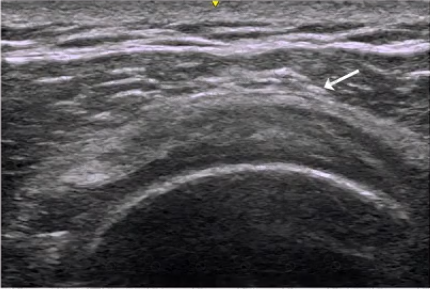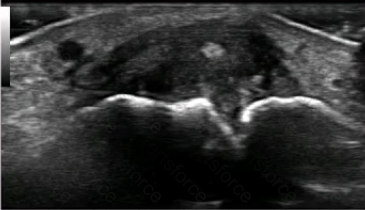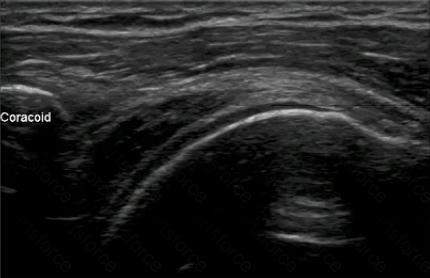Proper maintenance of ultrasound equipment between use for each patient is important to prevent which of the following?
This is a short-axis scan of the supraspinatus tendon in a normal person. What is the finding marked with the arrow?

This ultrasound image from a 60-year-old woman with knee pain is MOST suggestive of which of the following?

A 45-year-old man presents to the emergency room for evaluation of right knee pain for the past five days. He denies a history of trauma and is afebrile on examination. A right knee effusion is noted on exam. Arthrocentesis is planned and a traditional palpation-guided method is being considered versus an ultrasound-guided technique.
Which of the following is the MOST accurate description of the ultrasound-guided technique in this setting?
At which angle is a dorsal scan of the elbow BEST performed?
Which condition is the ultrasound examination of this nodular structure MOST suggestive of?


Which statement is TRUE regarding the techniques that can minimize infection during ultrasound-guided procedures?
For an ultrasound examination, how should the patient, ultrasound machine, and examiner be oriented?
What is the position of the arm MOST likely used to obtain this B-Mode image of the shoulder?

Which of the probe placement photographs BEST matches the standard wrist ultrasound image shown?
